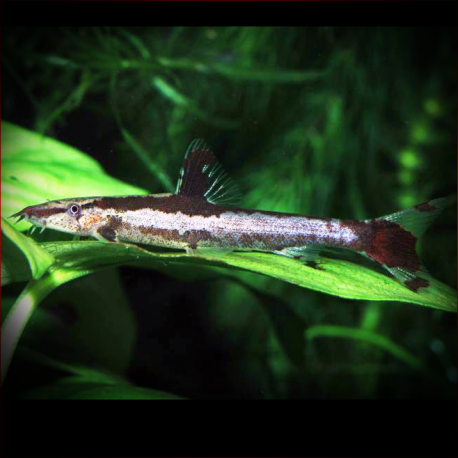More info
Datasheet
| Minimum Tank Size | 160 litres / 42.27 US gallons |
| Maximum Size | 10.0cm / 3.94inches |
| Temperature | 20°C / 68.00°F - 25.5°C / 77.90°F |
| Hardness | 1.01dgH / 18ppm - 10.03dgH / 179ppm |
| pH | 6.0-7.5 |
General Description
Homaloptera Bilineata, also known as Nemacheilus serpentarius Day, is a non-aggressive fish requiring specific tank conditions for optimal health. It features distinctive dark markings extending from the snout over the dorsal surface, with unique stripe patterns along its body. The species is identified by keeled scales and specific fin ray counts, with reddish fins in life. It belongs to the Balitoridae family, adapted for life in fast-flowing water.
Aquarium Setup
To accommodate Homaloptera Bilineata, a tank of at least 160 litres is recommended with clean, well-oxygenated water. An oversized filter and a water turnover of 10-15 times per hour are essential. Utilizing gravel, sand, rocks, and driftwood as substrate creates a suitable environment. Addition of aquatic plants such as Microsorum and Crinum spp. enhances the tank, with a need for stable water conditions and a secure lid due to the fish's climbing behavior.
Behaviour
This species prefers living in groups of six or more, displaying interesting social interactions. Individuals often position themselves facing the water flow, showcasing bold behavior in aggregations. While not aggressive, compatibility with tankmates requires research due to specific requirements. Their unique morphology allows them to cling to solid surfaces, exhibiting crawling and hopping movements over rocks.
Feeding and Diet
Homaloptera Bilineata is a specialized grazer, feeding on biofilm, small crustaceans, and insect larvae in the wild. In captivity, a diet of live or frozen foods like Daphnia and bloodworms is crucial for their health. The presence of algae and aufwuchs on tank surfaces is beneficial for their diet. Balitorids may arrive emaciated in stores, necessitating a consistent source of suitable foods for recovery.
Reproduction & Dimorphism
Although presumed to be a seasonal spawner, no breeding records exist for Homaloptera Bilineata in aquarium settings. Sexually mature females typically appear larger and fuller-bodied than males. The species exhibits dimorphic features such as body size and shape variations between genders.
Habitat and Distribution
Homaloptera Bilineata is indigenous to swiftly-flowing streams and headwaters with clear and oxygen-rich water in Myanmar and Thailand. It thrives in areas with gravel, rocks, and biofilm-covered surfaces, often found in riffles and shallow regions. Sympatric species in its habitat include various fish like Rasbora daniconius and Schistura moeiensis, emphasizing its preference for well-vegetated surroundings.
Note: The information provided is based on current scientific findings and may be subject to updates or revisions.

